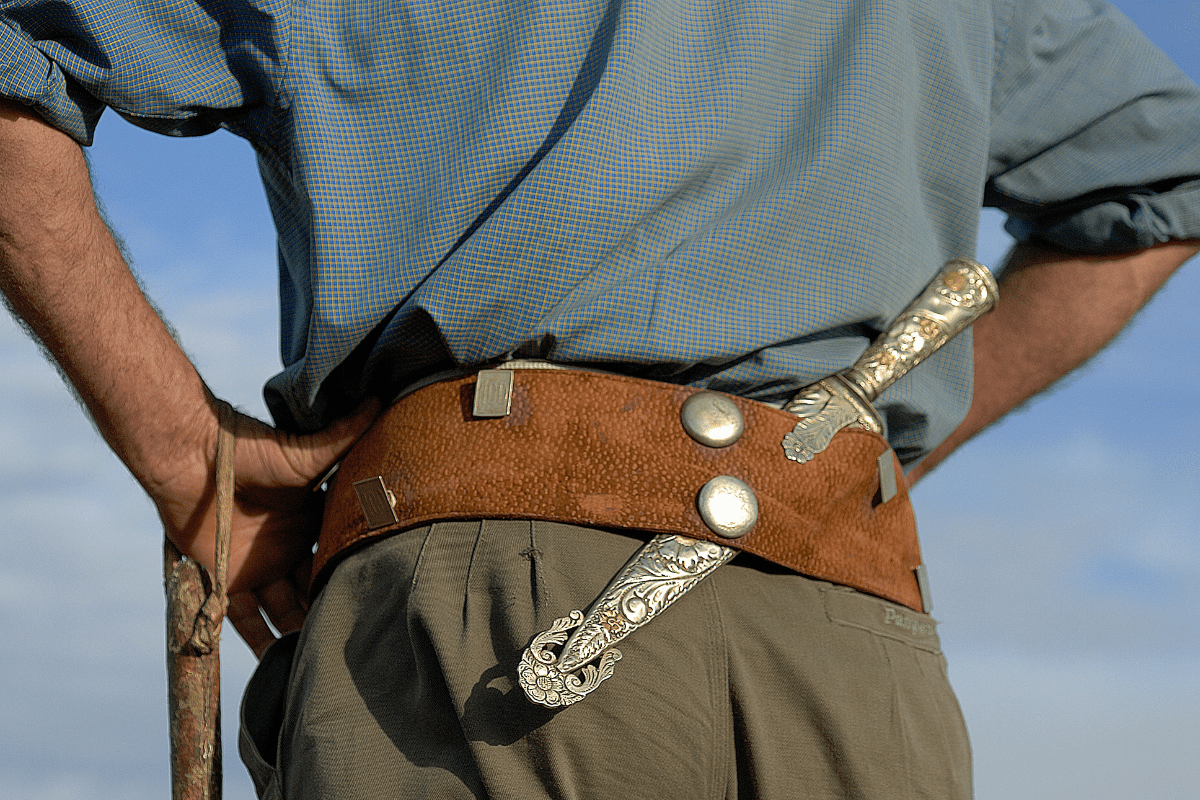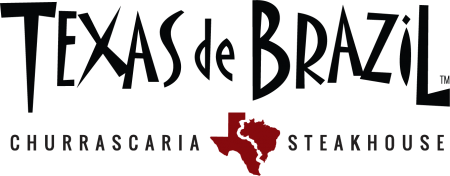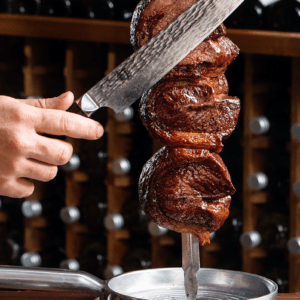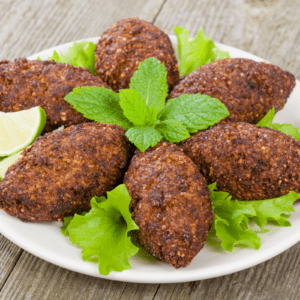The Gaucho Knife (Facón)

The history behind the gaucho knife is intertwined in the culture and history of the gauchos themselves. The image of the lone horseman hunting and foraging on the pampas, selling animal hides and ostrich plumes and sleeping under the stars sounds like a character from a novel rather than history. But the day-to-day existence of the gaucho was often fraught with the very real and very unromantic circumstances of hunger, thirst, and safety.
Gauchos first emerged as a distinct social class in the 17th century, but it was not until the 1800s that the name “gaucho” was used in writing by Spanish colonists. The name was, initially, a derogatory term for the nomadic horsemen, who were perceived as bandits and smugglers.
The origin of the term is not known, precisely. There are several theories, most of which have been debunked or highly questioned. However, most scholars agree that it likely arose from an indigenous word that contained sounds that could not be pronounced by speakers of Spanish and Portuguese.
The word garrucho, for example, is a Charruan word for a “low” or “contemptible person.” The Charrua were the indigenous peoples of the borders between Brazil and Uruguay. The double “r” sound in this word would have been difficult for Portuguese-speakers to pronounce. As a result, the spelling was probably changed to include an “h” sound. The resulting “gahucho” reached its final iteration in the form of “gaucho,” when Spanish-speakers omitted the “h” entirely.
Table of Contents
From Bandits to Heroes
The gaucho reputation was strongly bolstered during the Argentine and Uruguayan wars of Independence, during which they were recruited as soldiers for their superb horsemanship and knowledge of the land.
The gauchos proved themselves to be brave and highly adept cavalry men, especially under the leadership of Argentine caudillo Martin Miguel de Güemes. It was Guemes who helped turn the word “gaucho” from one of derision to one of respect, as he referenced the men in his troops as “my gauchos.”
Gaucho Culture
Like the American cowboys, gauchos had a distinctive style of dress that was both practical and traditional. Most wore a poncho that could also act as a horse blanket. The poncho was worn over loose pants called bombachas. The horseman could be further cushioned in the saddle with another blanket worn around the loins. This was called a chiripa, and was belted together with a sash known as a faja. The final adornment worn by many gauchos was an ornate leather belt.
As cattle herders, the gaucho diet consisted nearly entirely of beef. They also drank a special infusion of yerba mate, a strong tea that provides nutrients and caffeine. The tea was traditionally drunk through a long silver straw from a hollowed out gourd.
Gauchos were known for being solitary, but were also extremely hospitable to guests, offering food and shelter for as long as someone might need.
The Gaucho Knife
Unfortunately, gauchos also developed a reputation for violence amongst themselves, no matter how trivial the argument. Tucked into the sash of every gaucho was the facón, a distinctive and deadly blade that was sometimes used to resolve these arguments.
Approximately fourteen inches in length with an elaborate wooden or horn handle, the facón was most often used as a utility knife. However, it has also been attributed to a good deal of bloodshed. Charles Darwin, who lived in the pampas for half a year in 1833, faulted the knife for the fatalities which often occurred during petty brawls:
“…there is much bloodshed: the habit of constantly wearing the knife is the chief cause of the latter. It is lamentable to hear how many lives are lost in trifling quarrels.”
Gauchos Today
By the end of the 19th century, the gaucho way of life was on the decline. South Americans increasingly viewed the gauchos as backward, and their nomadic existence gave way to the more permanent occupation of rancher and herder.
However, the gaucho legacy remains a strong part of Argentinian, Uruguayan, and Brazilian culture. They are featured in numerous poems, novels, and artwork, commemorated for their assistance in the wars of independence.
You can also get a small taste of what it was like to be a gaucho through the style of cooking known as churrasco. The gauchos were the originators of this style of cooking, which is similar to asado in Spanish. Churrasco uses only a little salt and flame roasts cuts of meat to bring out its perfect texture and flavor.
Gaucho Knife Gift
The facón continues to be a symbol of the gaucho way of life. Its rustic beauty and honed edge make it an ideal carving tool and a beautiful present for the foodie or historian in your life.
The gaucho knives offered by Texas de Brazil are a true homage to this unique culture. A ten inch stainless steel blade is paired with a bone or polished wood handle. The knife is encased in a soft leather sheath and presented on red felt in a wooden box. Visit our online shop to view our current availability.




